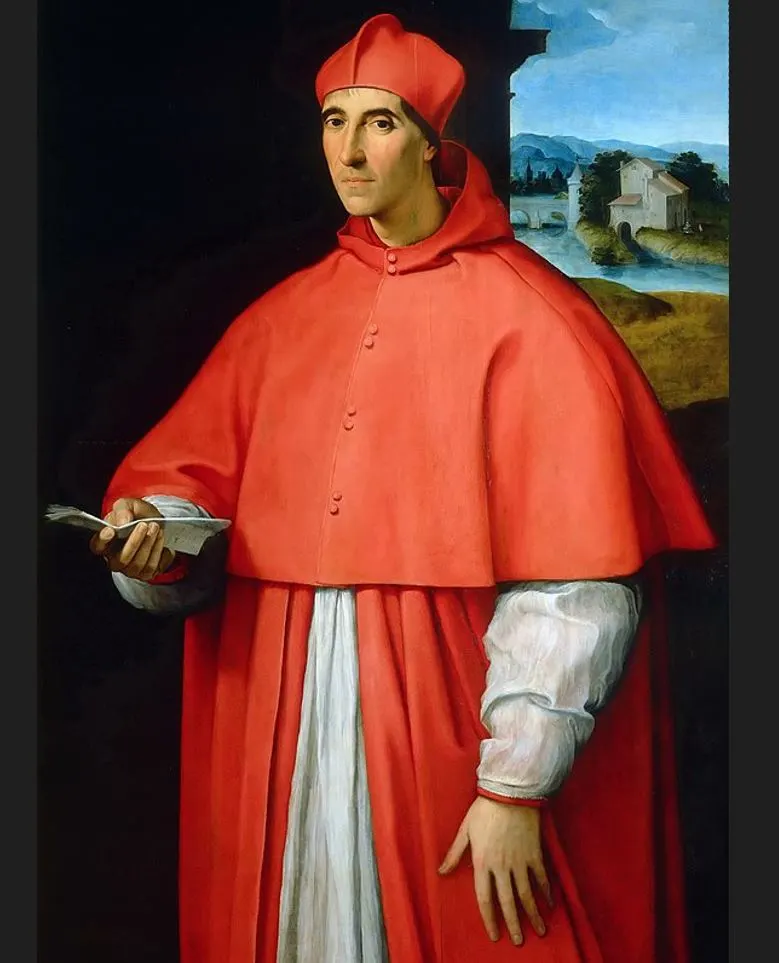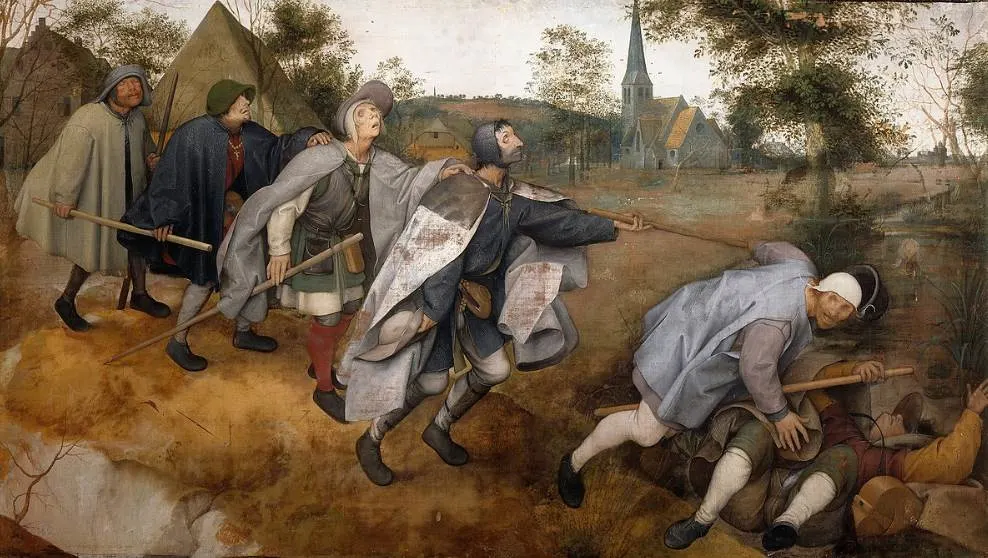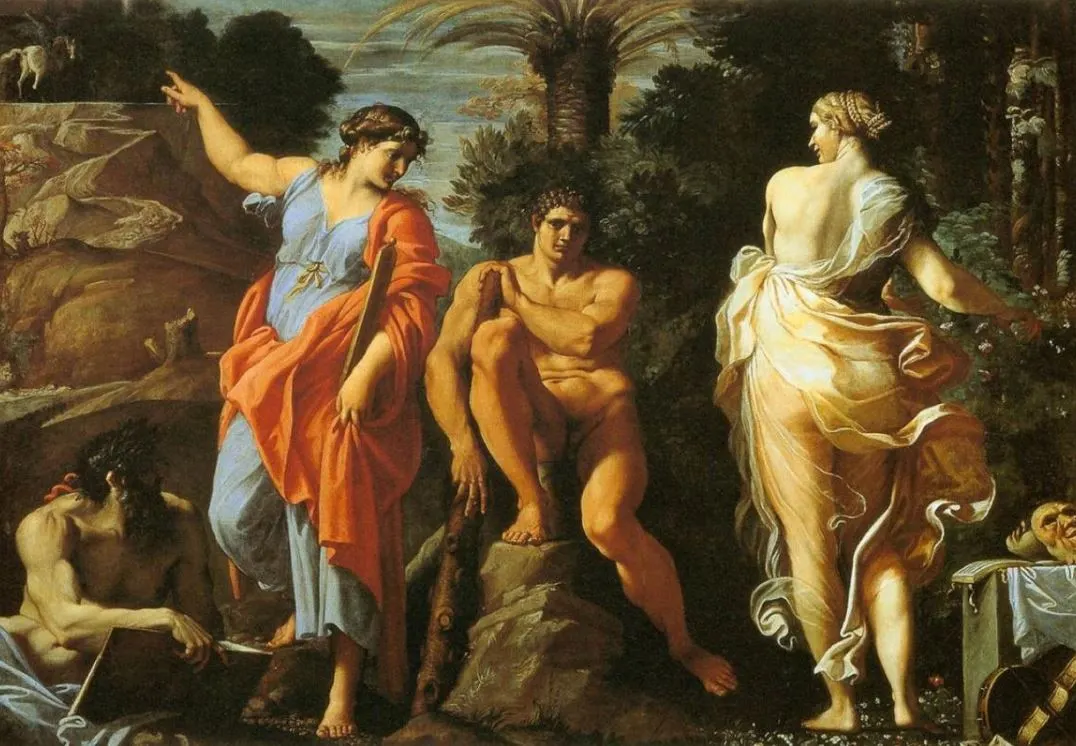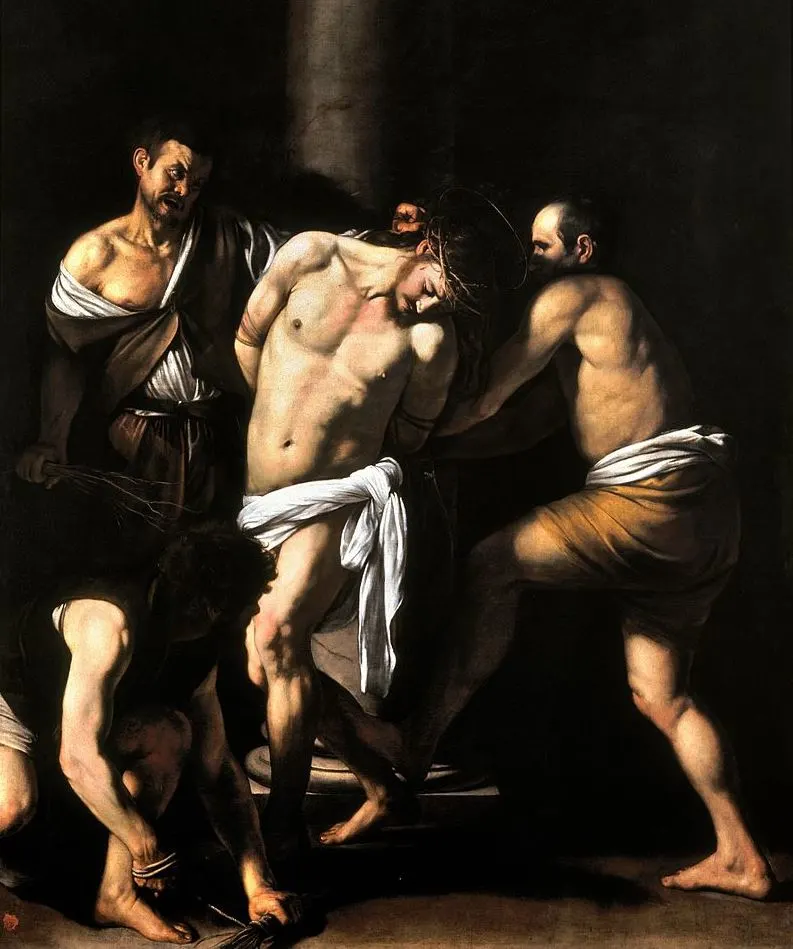One of the 2 royal palaces in Naples known as the Palazzo di Capodimonte was constructed in the 18th century in the northern part of the city.
It served as the Summer residence of the Bourbon rulers and was initially intended to be nothing more than a hunting lodge.
When the instigator, King Charles VII of Naples and Sicily (the future King of Spain), inherited the Farnese collection from his mother, he decided to build a major palace to house it.
Even though the work on the palace started in 1738, it was only completed over a century later. Today, it houses the Museo di Capodimonte, a museum that was established in 1957.
The first two floors of the palace are occupied by the Galleria Nazionale (National Gallery) of which the Farnese collection forms a major section.
In this article, you’ll discover some of the most famous paintings at the National Museum of Capodimonte.
1. Toulouse Altarpiece – Simone Martini
- Date created: 1317
- Dimensions: 200 x 138 centimeters (78.7 x 54.3 inches)
The Toulouse Altarpiece is also known as the “Altar of Saint Louis of Toulouse” and is a magnificent Gothic artwork that was completed in the early 14th century. It was completed using tempera on wood, which was common during the Middle Ages and painted by the Italian artist Simone Martini (1280-1344).
It was commissioned by Robert the Wise, King of Sicily, and depicts Saint Louis of Toulouse together with his kneeling brother. The Gothic artist completed a remarkably large painting as it also features smaller predellas that depict several other scenes. It’s the first altarpiece of its kind to survive intact.

2. Virgin and Child with Two Angels – Sandro Botticelli
- Date created: 1468-1469
- Dimensions: 100 × 71 centimeters (39 × 28 inches)
Virgin and Child with Two Angels is the title of an early painting by Sandro Botticelli (1445-1510), one of the greatest Renaissance artists in history. It was completed when the artist was still in his early twenties and was once wrongfully attributed to Filippo Lippi (1406-1469), the artist’s master.

The painting wasn’t dated but based on the composition and the details of the painting, it was estimated to have been completed in the late 1460s. The painting looks strikingly similar to the work of the same name by Andrea del Verrocchio (1435-1488), a man famously known as the master of Leonardo da Vinci (1452-1519).

3. Transfiguration of Christ – Giovanni Bellini
- Date created: 1480
- Dimensions: 116 × 154 centimeters (46 × 61 inches)
The Transfiguration of Christ is a painting by Giovanni Bellini (1430-1516), another renowned Renaissance master who painted dozens of amazing Renaissance paintings during his long career. He was a member of the Bellini family from Venice and is today considered to be the most prominent of all his family members.
His style revolved around color and detail and this is highlighted in this mesmerizing work of art. It depicts a scene from the Old Testament in which Jesus presumably became radiant on top of a mountain. James and Peter stand beside Jesus while other people lie on the floor in shock at what they are experiencing.

4. Portrait of Cardinal Alessandro Farnese – Raphael
- Date created: 1509-1511
- Dimensions: 139 × 91 centimeters (55 × 36 inches)
The Portrait of Cardinal Alessandro Farnese is one of the many amazing masterpieces by Raphael (1483-1520), one of the greatest artists of the High Renaissance. It depicts Alessandro Farnese (1468-1549), a man who became Pope Paul III in 1534, a title he held until his death.
When this painting was completed he was a Cardinal and in his early forties. Raphael was at the height of his career and he probably completed this work shortly after he arrived in Rome. The Cardinal was painted in a rather dark room with a bright landscape seen outside of the window behind him.

5. Danaë – Titian
- Date created: 1544-1545
- Dimensions: 117 x 69 centimeters (46 x 27.1 inches)
Danaë is the title of several paintings by Titian (1488-1576) and his workshop between 1544 and the 1560s. The painting was commissioned by Alessandro Farnese (1520-1589), the grandson (with the same name) of Pope Paul III who was painted by Raphael several decades earlier.
The painting depicts a popular figure from Greek Mythology who was locked into a room by her own father because he believed in a prophecy that he would be killed by his grandson. Perseus, the son of Danaë and Zeus, eventually makes this prophecy come true. The painting at the Museo di Capodimonte was the original version of this series.

6. The Blind Leading the Blind – Pieter Bruegel the Elder
- Date created: 1568
- Dimensions: 86 × 154 centimeters (34 × 61 inches)
The Blind Leading the Blind is a painting by Pieter Bruegel the Elder (1525-1569) that also goes by the name “The Parable of the Blind.” It was completed in the year before the artist passed away and is one of many of his paintings that have a deeper meaning.
This particular painting depicts a parable from the Bible that is mentioned in the Gospel of Matthew 15:14. The moral of the story revolves around people getting advice from people who know nothing. An interesting detail about this work is that all depicted people suffer from different eye conditions.

7. The Choice of Hercules – Annibale Carracci
- Date created: 1596
- Dimensions: 166 × 237 centimeters (65 × 93 inches)
The Choice of Hercules is the title of a fairly large painting by Annibale Carracci (1560-1609), a painter from Bologna who worked in Rome during the final years of his life. He developed a unique style of Baroque painting during his career together with his family members. This is known today as the Bolognese School.
This work depicts an ancient Greek parable known as the “Choice of Hercules,” a choice that the young man must make between a life of pleasure or a life of hardship that revolves around honor. Virtue is depicted on the left while vice tries to lure him onto the path of Earthly pleasures on the right.

8. The Flagellation of Christ – Caravaggio
- Date created: 1607
- Dimensions: 286 × 213 centimeters (113 × 84 inches)
The Flagellation of Christ is the title of a very distinctive painting by Caravaggio (1571-1610) which highlights the Tenebrism style that he developed. The Baroque painter mastered the dramatic use of chiaroscuro, the contrast between light and dark, in his paintings.
As the title suggests, this work depicts a scene from the Passion of Christ that revolved around his torture before his execution. Caravaggio painted another version of this work with a different composition titled “Christ at the Column” (1607). This painting is part of the collection of the Musée des Beaux-Arts de Rouen in France.

9. Judith Slaying Holofernes – Artemisia Gentileschi
- Date created: 1612-1613
- Dimensions: 158.8 × 125.5 centimeters (78.33 × 64.13 inches)
Judith Slaying Holofernes is a painting by Artemisia Gentileschi (1593-1653), one of the leading female Baroque painters of the 17th century. She was highly influenced by Caravaggio and also used the Tenebrism technique in her art. This was something she learned from her father Orazio who was one of Caravaggio’s first followers.
This particular painting depicts a scene from the Book of Judith in the Old Testament in which Judith kills general Holofernes together with her servant Abra. The assassination of the Assyrian general was a common subject in Baroque paintings and Gentileschi painted a second version in the early 1620s as well. This work is part of the collection of the Uffizi Gallery in Florence.

10. Ferdinand I and His Family – Angelica Kauffman
- Date created: 1783
- Dimensions: 310 x 426 cm (122.04 x 167.71 inches)
Ferdinand I and His Family is a painting by Angelica Kauffman (1741-1807) that depicts King Ferdinand I of Naples together with his family. The Neoclassical artist became close friends with the king’s wife Maria Carolina during her stay in Naples between 1782 and 1783, and she completed this painting while she was in Rome.
Apart from the king and his queen in the center, the painting also features the couple’s children on both sides. These are Maria Theresa and Francis on the left and Maria Cristina, Maria Luisa, Maria Amalia, and Gennaro Giuseppe on the right. The tragic story behind this work is that the youngest of the family, Gennaro Giuseppe, died as an infant.

